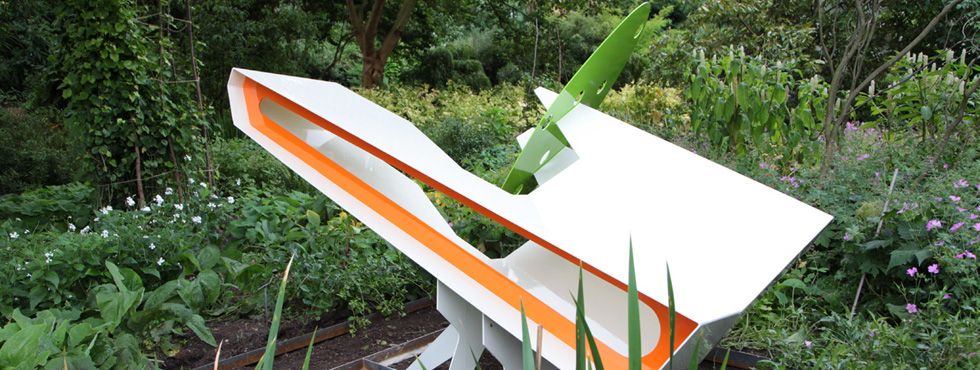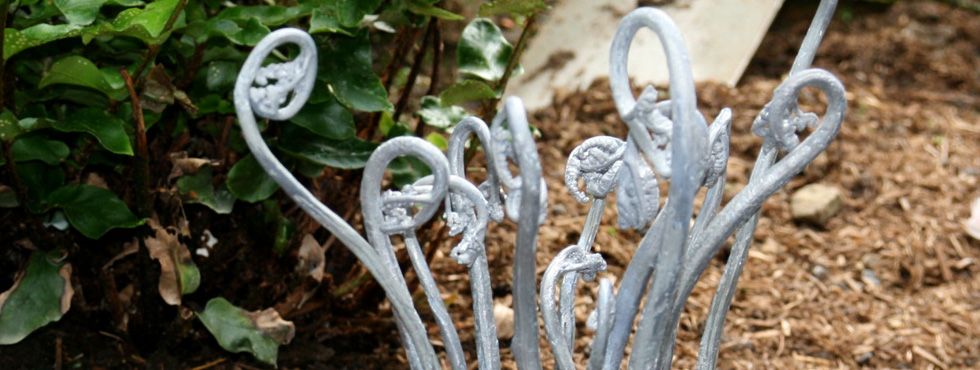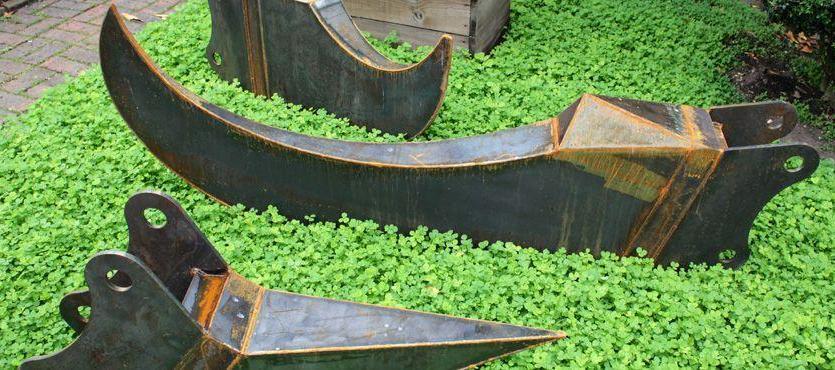There is a growing fashion for new public sculpture and anthologies of contemporary sculpture outdoors, inspiring various polemics for and against. Kew Gardens has been at it for nearly a decade: there was a triumphant Henry Moore show several years ago, followed by glass artist Dale Chihuly festooning their lakes and ponds. The current artist-in-residence, David Nash, creates works with wood from fallen trees.
Kew has deliberately focused on artists accustomed to working out of doors, and although the results have been variable, the attempt has been serious and intelligent. Elsewhere, Caro at Chatsworth, the first time Sir Anthony Caro had shown his work outdoors, was a critical success earlier this summer. A vivid and highly critical contribution to the wider debate has come from theartsdesk’s own Igor Toronyi-Lalic, whose report on public art and its commissioning, What’s That Thing?, was published by the New Culture Forum this year. So it is intriguing that the Chelsea Physic Garden, founded in 1673 and London’s oldest botanic garden, has joined in with what is billed as its largest ever sculpture exhibition, entitled Pertaining to Things Natural and comprising work by 20 artists.
It is dispiriting to report that the sculptural interventions on view are unusually dire
The garden itself has over 5000 plant species. They are divided into sections explaining everything from how plants - from tea to chilli - were transported across the world over the past several centuries, to their uses not just for food but for medicine (the physic of the Physic Garden) and their vital relationship with bees, butterflies and pollination.
 It is a vivid introduction to the world history of flora shown in a careful array of living plants, condensed and intelligible, so it is sad and dispiriting to report that the sculptural interventions on view are, with a handful of honourable exceptions, unusually dire. The organisers declare that they are using this opportunity to add to the environmental debate; the installations are mostly negative distractions, trival, boring and peculiarly pointless. The thought that artists have a hard time competing with nature is borne out in much of the art on view. Michael Shaw’s two brightly coloured pieces in ripstop fabric (whatever that is – perhaps for parachutes?) are hung in trees. They are vaguely organic in shape, suggestive of the rather terrifying plants one might encounter in science fiction, and inflate and deflate on a digital timer. They just look like party balloons which have lost their way, adding to the general litter of the city. (Pictured above right, Joe Currie's Intake.)
It is a vivid introduction to the world history of flora shown in a careful array of living plants, condensed and intelligible, so it is sad and dispiriting to report that the sculptural interventions on view are, with a handful of honourable exceptions, unusually dire. The organisers declare that they are using this opportunity to add to the environmental debate; the installations are mostly negative distractions, trival, boring and peculiarly pointless. The thought that artists have a hard time competing with nature is borne out in much of the art on view. Michael Shaw’s two brightly coloured pieces in ripstop fabric (whatever that is – perhaps for parachutes?) are hung in trees. They are vaguely organic in shape, suggestive of the rather terrifying plants one might encounter in science fiction, and inflate and deflate on a digital timer. They just look like party balloons which have lost their way, adding to the general litter of the city. (Pictured above right, Joe Currie's Intake.)
James Capper’s Tooth series, subtitled Exstenda (sic) Claw (main image), is needlessly aggressive, while William Peers' tasteful ripples in Italian marble are simply pointless. Other works just fall into so-whatism, such as James Graham’s Golden Cage, a small cascade of volcanic rocks held together by gold wire processing through a garden bed by the garden wall; or Judith Dean’s Floe, where bits of white paper floating in the small pond resemble overlooked rubbish. This is modern art lite.
Peter Randall-Page’s gigantic split seed pod, Parting Company, in golden limestone and sitting on a patch of lawn, is at least linked to the marvellously fantastical shapes nature provides. Equally, Hugo Wilson’s big painting Stinging Nettle, hung indoors, also highlights the superb gradations of colour and exuberant shapes that nature seems to provide so effortlessly and that we often overlook.
 If you look hard enough there are surprises. These include Jo Coupe’s tiny piece of curled-up plant shapes (pictured left), planted in a greenhouse, in poisonous lead; Chris Drury’s digital transparencies, Spore Prints, seemingly just breathed onto the glass panes of another greenhouse; Tim Knowles' Seedsuit – Dispersal Device 1, a subtly absurd suit with its external seams stuffed with seeds - the idea being that you walk through the landscape in the suit, dispersing seeds as you go; and Tania Kovats’ big bucket of compost, all twigs, branches and earth, the black gold of gardening. It sits next to the fence around the garden’s compost heap, painted gold.
If you look hard enough there are surprises. These include Jo Coupe’s tiny piece of curled-up plant shapes (pictured left), planted in a greenhouse, in poisonous lead; Chris Drury’s digital transparencies, Spore Prints, seemingly just breathed onto the glass panes of another greenhouse; Tim Knowles' Seedsuit – Dispersal Device 1, a subtly absurd suit with its external seams stuffed with seeds - the idea being that you walk through the landscape in the suit, dispersing seeds as you go; and Tania Kovats’ big bucket of compost, all twigs, branches and earth, the black gold of gardening. It sits next to the fence around the garden’s compost heap, painted gold.
In any event, it is rather gratifying to report that visitors to the Physic Garden hardly noticed most of the sculpture. There is an excellent café, and for those interested in gardens, gardening and gardening history, a great shop.









![SEX MONEY RACE RELIGION [2016] by Gilbert and George. Installation shot of Gilbert & George 21ST CENTURY PICTURES Hayward Gallery](/sites/default/files/styles/thumbnail_125_x_125_/public/mastimages/Gilbert%20%26%20George_%2021ST%20CENTURY%20PICTURES.%20SEX%20MONEY%20RACE%20RELIGION%20%5B2016%5D.%20Photo_%20Mark%20Blower.%20Courtesy%20of%20the%20Gilbert%20%26%20George%20and%20the%20Hayward%20Gallery._0.jpg?itok=3oW-Y84i)





Add comment